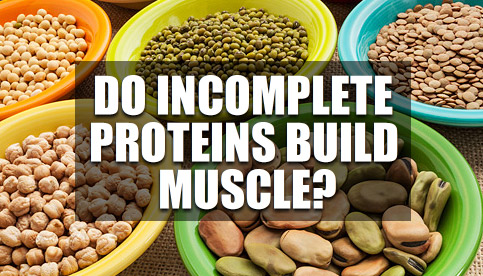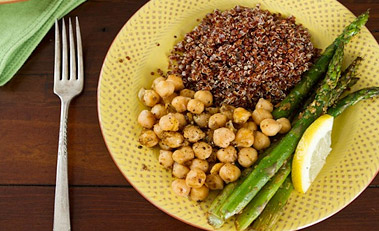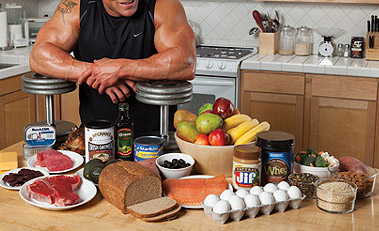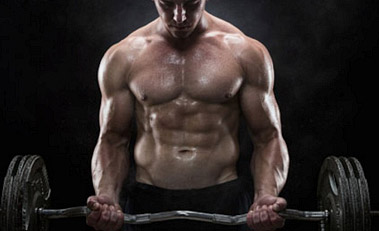DO INCOMPLETE PROTEINS BUILD MUSCLE & SHOULD YOU COUNT THEM?

Whether you’re following a plant-based diet or are just trying to figure out how to properly track your daily macronutrient intake, the question of complete vs. incomplete protein is one that springs up quite often.
Should you count incomplete proteins as part of your daily protein totals, and do they contribute positively to muscle growth?
Let’s go over it…
Do Incomplete Proteins Count?

The simple answer here is that yes, they certainly do.
Whether it’s 30 grams from a chicken breast or 1 gram from a banana, every gram of protein that you eat throughout the day does count toward your protein total and does assist your muscle building and fat burning efforts.
All proteins are made up of individual building blocks called amino acids, 9 of which are considered “essential” since your body cannot produce them on its own.

Traditionally speaking, “complete proteins” are those that contain a sufficient proportion of all 9 essential amino acids on their own and are generally derived from animal sources such as chicken, beef, eggs, dairy etc.
On the other hand, “incomplete proteins” are those that are particularly low in at least one essential amino acid, which is typically referred to as the “limiting amino acid” in that food. These are generally derived from plant sources such as fruits, vegetables and grains.
However, it’s important to keep in mind that all protein sources are technically “complete” since they still do contain all 20 of the amino acids in some amount.
It’s just that some foods have lower amounts of certain amino acids in comparison to others. Also remember that protein overdose may have side effects too.
For example, beans are high in the amino acid lysine but are low in methionine, whereas grains are high in methionine but low in lysine.
If for some reason you were only eating a relatively small amount of protein per day from a limited number of sources, this likely would become a legitimate concern since you wouldn’t be receiving a sufficient amount of certain amino acids needed to optimize muscle protein synthesis and overall health.
However, in the context of an overall diet providing enough total daily protein from a variety of sources, the whole notion of “complete vs. incomplete protein” basically becomes a non-issue.

This is because your body can only build a limited amount of muscle in any given day to begin with, and it only requires a finite amount of each specific amino acid to maximize your growth potential over that specific period.
More protein and more amino acids does not automatically mean more muscle growth, and there are diminishing returns as your total protein intake gets higher and higher until eventually there’s no added benefit at all.
So, instead of thinking in terms of “complete vs. incomplete protein”, it’s far more useful to simply think in terms of total protein intake and total amino acid intake for the entire day as a whole.
As long as you’re getting in somewhere between 0.8-1g of protein per pound of body weight daily and are following a standard “fitness diet” that includes a variety of different protein sources, you’ll automatically be getting enough of each individual amino acid to optimize your results.
For that reason, worrying about the specific amounts of “complete” vs. “incomplete” protein you’re consuming is really just an unnecessary over-complication.
Remember, your body does not view your diet within the context of individual foods, and amino acids are amino acids regardless of which specific source they’re coming from.
On top of this, your body also has a “free amino acid pool” available that it can draw from if certain aminos are missing at a particular time when they’re needed.
So, if a certain meal you eat is low in a particular amino acid, your body can draw from this pool to balance things out.
This is why, contrary to what was traditionally recommended in the past, there’s actually no need for vegans/vegetarians to specifically combine their incomplete protein sources together at each meal to form a complete protein.
The Bottom Line On Complete Vs. Incomplete Protein

While it’s true that a typical “complete” protein source such as chicken would be superior to an “incomplete” protein source such as rice on a gram for gram basis, it’s really not a practical concern when looked at in the overall picture.
As long as you’re consuming enough total protein for the day as a whole derived from a variety of different sources, all of your individual amino acid needs will be met one way or another.
The issue of complete vs. incomplete protein is more or less an outdated concept at this point, and it’s not something you need to concern yourself with from a muscle building or overall health perspective.
Just focus on total protein content and variety, and you’ll be good to go.
If you found this article helpful, make sure to sign up for your FREE custom fitness plan below...




